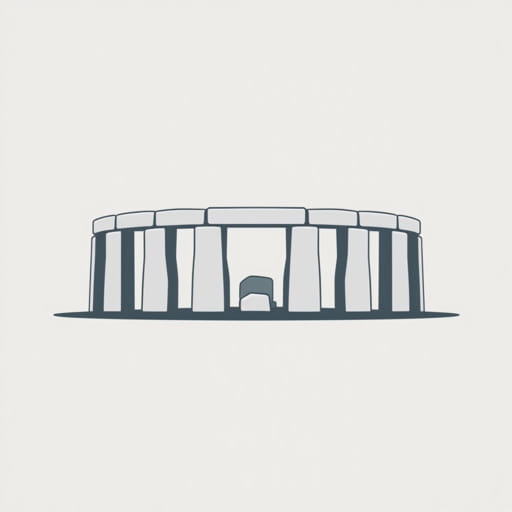is stonehenge a reconstruction
Stonehenge, one of the most iconic prehistoric monuments in the world, continues to captivate millions with its mysterious origin and monumental scale. Often seen as an untouched relic of ancient civilization, many people believe that Stonehenge stands exactly as it was thousands of years ago. However, this common belief is not entirely accurate. In truth, parts of Stonehenge have undergone multiple restorations and reconstructions over the past century. Understanding the extent and purpose of these interventions is crucial for anyone interested in the authenticity and preservation of historical landmarks.
What Is Stonehenge?
Located in Wiltshire, England, Stonehenge is a circular arrangement of massive standing stones that dates back to around 30002000 BCE. Archaeologists believe it was built in several stages over hundreds of years. The site includes an outer ring of vertical sarsen stones capped with horizontal lintels, and an inner horseshoe of similar stones.
Stonehenge is often linked to religious or astronomical purposes, though its true function remains unknown. The arrangement of the stones suggests an advanced understanding of celestial patterns, especially the alignment with the summer and winter solstices.
Early Deterioration and Human Impact
By the 17th and 18th centuries, travelers, antiquarians, and farmers had begun disturbing the original arrangement of the stones. Some stones fell naturally over time due to erosion or unstable foundations, while others were reportedly removed or damaged by people looking for souvenirs or building material.
Sketches and records from past centuries show a site that looked significantly different from the one seen by modern visitors. Several key stones were missing or leaning dangerously. The site, while still impressive, had clearly suffered from centuries of neglect and tampering.
Reconstruction in the 20th Century
Modern reconstruction efforts at Stonehenge began in the early 1900s. One of the first major restorations occurred in 1901, under the supervision of engineer William Gowland. At that time, one of the massive stones had collapsed and was re-erected. This action marked the beginning of a series of carefully planned restorations.
Notable Restoration Periods
- 1901: Re-erection of fallen stones and basic site stabilization
- 19201950s: Restoration of stone settings and removal of modern structures around the site
- 1958: Re-erection of three stones using cranes, with concrete foundations added for support
- 1964: Final stage of heavy restoration to reposition several upright and lintel stones
These interventions were guided by archaeological research and aimed to restore Stonehenge to what experts believed was its original layout. However, due to limited information at the time, some placements may reflect educated guesses rather than confirmed configurations.
Why Was Stonehenge Reconstructed?
There are several reasons why parts of Stonehenge were reconstructed:
- To prevent further collapse and preserve the structure for future generations
- To offer a more accurate visual representation of the monument’s original form
- To support archaeological interpretation and tourism
The preservation of such a significant cultural and historical site required stabilization measures. Without intervention, more stones could have fallen or become buried, distorting the public’s understanding of the monument’s significance and scale.
Controversy and Debate
While the reconstructions were carried out with care and intent, they have not been without criticism. Some historians and archaeologists argue that reconstructing ancient monuments can distort history and mislead the public about what is original and what is not. Others believe that the restorations were necessary and justified, as they help preserve the essence of the site.
Critics point to the lack of transparency in the early 20th century, when documentation of the reconstruction process was not always thorough. Today, however, English Heritage, the organization responsible for the site, provides information about the restorations and encourages scholarly research.
How Much of Stonehenge Is Original?
Despite the restorations, the majority of Stonehenge’s stones remain in their original Neolithic positions or locations close to where they were found. The key elements of the inner circle and horseshoe arrangement are still largely authentic. However, around a dozen stones have been moved or re-erected, and modern materials such as concrete were used in the process to stabilize their bases.
This means that while Stonehenge is not entirely untouched, it is also not a complete reconstruction. The site remains rooted in its ancient past, with reconstructions enhancing, rather than replacing, the original structure.
Visitor Experience and Modern Interpretation
Today, visitors to Stonehenge can view the monument from a designated path that circles the structure. Information boards and guided tours explain the history of the site, including its construction, use, and restoration. English Heritage emphasizes both the monument’s prehistoric origin and the modern efforts to preserve it.
Technological tools such as 3D modeling and augmented reality also allow visitors to explore what Stonehenge might have looked like in its prime, without further altering the physical structure.
Similar Examples of Restoration
Stonehenge is not unique in undergoing partial restoration. Other famous historical sites around the world have also been reconstructed to various degrees, such as:
- The Parthenon in Athens, with ongoing efforts to rebuild its columns
- The Acropolis, restored using both ancient and modern materials
- Pompeii, where buildings have been partially rebuilt for interpretation
In these cases, restoration has helped preserve fragile structures, allow public engagement, and support archaeological research.
So, is Stonehenge a reconstruction? The answer is partly yes. Several stones have been moved, reset, or stabilized over the past century to prevent further decay and restore the site’s integrity. These restorations were carried out by professionals using the best knowledge available at the time, with the goal of preserving Stonehenge’s historical and cultural value.
While not untouched, Stonehenge remains a powerful connection to the Neolithic past. Visitors today are not looking at a modern imitation but a carefully preserved and partially restored version of a monument that has stood for over 4,000 years. Its continued presence, even with the aid of reconstruction, allows people around the world to appreciate the ingenuity and spiritual beliefs of ancient builders. Understanding its preservation journey adds to the wonder, rather than detracts from it.
